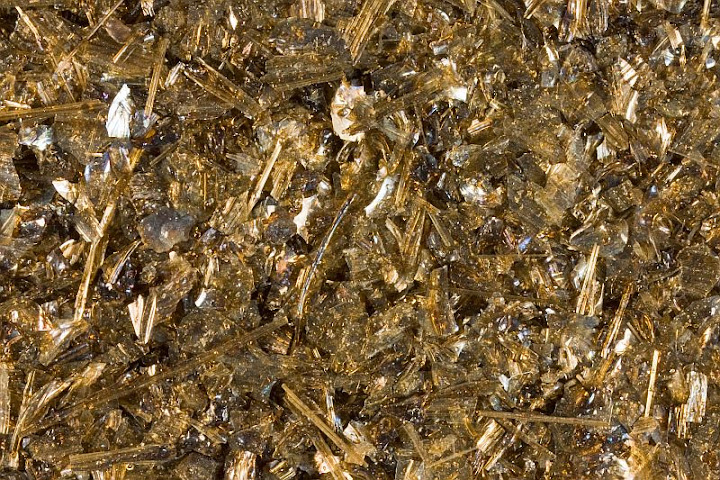Pele’s hair is a term for volcanic glass fibers. Its formation is usually associated with fire fountaining when blobs of flying molten lava are stretched into very thin threads. Theoretically the same could be done with an ordinary molten glass because it is polymerized and can be stretched into very long and thin strands. Pele’s hair fibers may be several meters long while being only a fraction of a millimeter in width. These lightweight fibers are then transported away by wind. They can be carried several kilometers away from vents.

Flying Pele’s hair can stick to the upper crust of a lava flow. Lava flow with Pele’s hair has a bronze-colored hue instead of ordinary black.
It is sometimes assumed that wind stretches these filaments out of a basaltic lava flow but I find it too hard to believe. Lava flow is too compact and thick for that. There must be more intense force involved that puts a real strain on the molten material. However, similarly stretched strands often form as lava tongues break out and stretch the already partly solidified outer crust of the flow. You can see such strand in the last picture, but the majority of Pele’s hair is most likely associated with fire fountaining.

Pahoehoe fibers are golden brown. They may be found in crevices shielded from wind.
The term “Pele’s hair” comes from Hawai’i just as many other volcanological terms. Pele is a local volcano goddess there. For some reason her hair is usually imagined to be black and/or red by artists. There is an obvious inconsistency because these are not the colors of Pele’s hair. At least not the color of the material we call that way. Her hair is therefore not composed of lava flows and should be golden brown. Perhaps we should think again how to really draw her.
Pele’s hair is not associated with Hawaii only. Similar lava threads form in other places too, for example in Nicaragua (Masaya) and Ethiopia (Erta’ Ale)1.

A macrophoto of Pele’s hair. Width of view is 16 mm.

Thin and fragile strand extending from the glassy crust of a basaltic pahoehoe lava flow.
References
1. Francis, P. & Oppenheimer, C. (2003). Volcanoes, 2nd Edition. Oxford University Press.
Leave a Reply